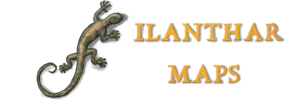I believe as well it is a quite efficient way to draw mountains and I will admit that my first maps used such a style. Howver it is quite tricky and I was not quite able to make it look right.
You on the other hand, you seem to have a good start but I still have one little point to stress out, that is just like the map I showed you there are some lines that are more confusing than anything else. I have highlighted them in red and, if you look back at my map, maybe you will understand what I mean by confusing.








 Reply With Quote
Reply With Quote







